Pennsylvania’s Montour Trail
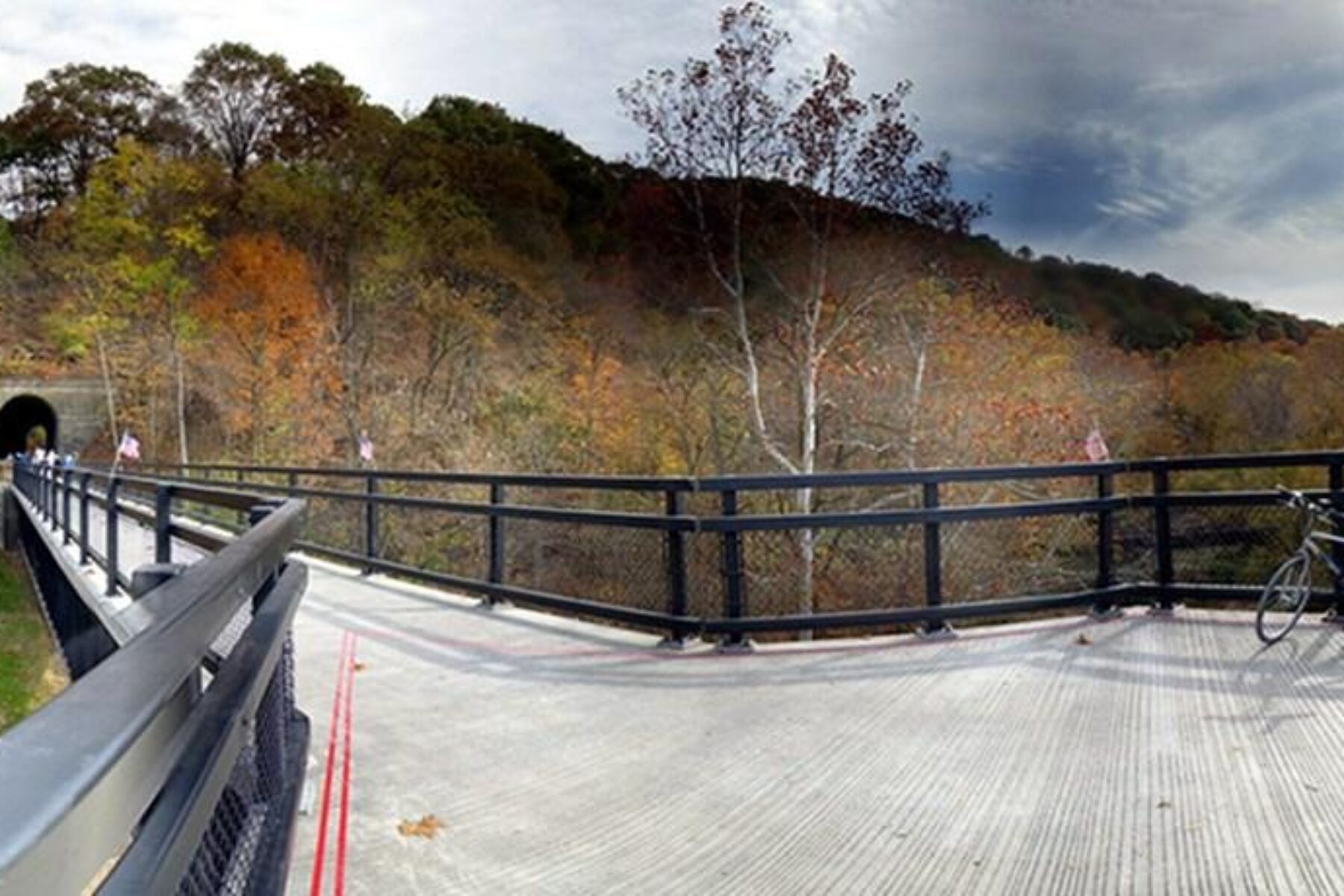
Trail of the Month: March 2015
“The Montour Trail has a huge volunteer base that does everything from A to Z … They do incredible work and take everything to the next level.”
In terms of rail-trail mileage, Pennsylvania dominates, but in a crowded field, the Montour Trail—which forms a 55-mile arc around western Pittsburgh—is a standout with plenty of “wow” moments. Covering such a vast distance, the crushed-limestone path is expectedly diverse winding through both rural Washington County and the more lively Allegheny County (which is second only to Philadelphia County in terms of population). Whatever you’re looking for in a trail, it’s here: dozens of picturesque bridges (though the nearly 1,000-foot-long McDonald Viaduct steals the show), three railroad tunnels that beckon cool and inviting in the summer, remote woodlands and rolling farmlands, welcoming small towns and big-city connections.
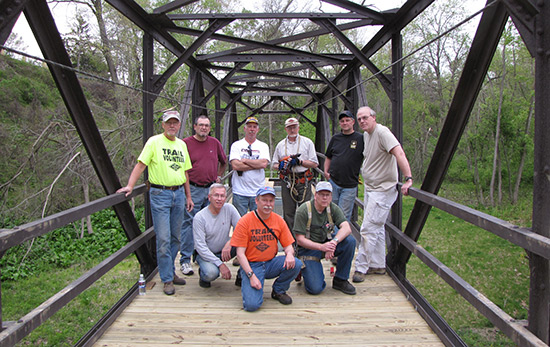
Perhaps what sets it apart most, though, is what you don’t see. The rail-trail was created and continues to grow and thrive through the stalwart efforts of a nonprofit called the Montour Trail Council (MTC). It’s estimated that their volunteers donate more than 15,000 hours annually to build and maintain the trail.
“The Montour Trail has a huge volunteer base that does everything from A to Z,” says Tom Sexton, northeast regional director for Rails-to-Trails Conservancy (RTC). “I think it’s the best all-volunteer-managed trail in the United States. They do incredible work and take everything to the next level.”
The organization started with two friends, Stan Sattinger and Dino Angelici—one an engineer and the other a dentist—two ordinary men with extraordinary vision. In 1989, they gathered a core group of 15 people to discuss plans for the recently abandoned Montour Railroad, which dated back to 1877 and was originally used to haul coal. They raised public and private money to acquire the right-of-way, obtained the support of Allegheny County and other government entities, and brought awareness of the project to the community through public meetings and a bimonthly newsletter.
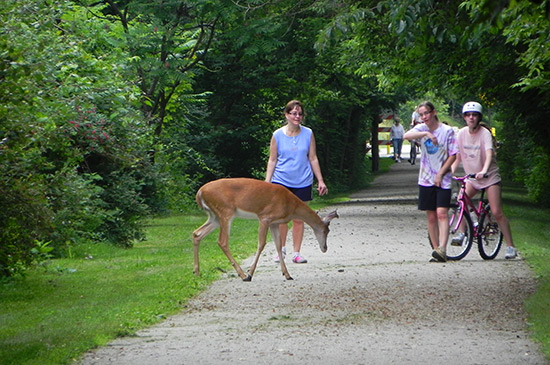
Their first success was the completion of a 4.5-mile segment in Cecil Township, which opened in 1992. Fueled by a passion for trails and pizza—Burg’s Pizza and Wings Restaurant, located just down the street from MTC headquarters, has been a longtime supporter—more segments followed.
During one of those early meetings, a new volunteer, Frank Ludwin, said he saw an old dump truck for sale that he, a welder and heavy equipment operator, could fix up for use on the trail. It was the first piece of trail-building equipment the group bought. Under his leadership, a grader, a roller, trackers and backhoes followed, enabling the group to physically build the trail themselves, except for more complicated structures, such as bridges, for which professional hired help was needed. Frank loved the trail and labored on it up until the week he passed away last December at the age of 81.
This can-do attitude of its volunteers, coupled with an open door for anyone that wants to help, is what makes MTC so special. “Even if you don’t have specific skills, there are things you can do, like handing out water at a running event for fundraising,” says Paul McKeown, secretary of MTC’s engineering and construction committee. “We have all kinds of people doing all kinds of things.”
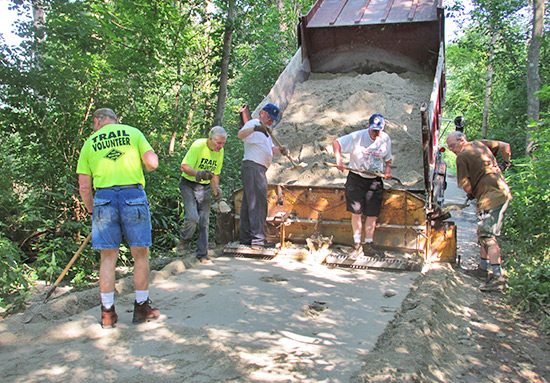
Although the group met some initial resistance to the project, a smart construction strategy nipped negativity in the bud. “We started in areas where we had lots of support and built the trail there,” says McKeown. “We went for the low-hanging fruit, and then those opposed would say, ‘Wow, that looks good. When are you coming to our neighborhood?’”
With a shoestring budget, the effort started out with “little pieces, and then we got to bigger and bigger pieces,” says McKeown. First built in one-to-five-mile sections, the project has now grown to include such “bigger pieces” as the $2.2 million renovation of the Library Viaduct, which spans 500 feet across a stream and light rail tracks, and the construction of a $1.3 million bridge over Valley Brook Road. The group plans to utilize Transportation Enhancement funds for the projects, and both are anticipated to be completed this year (the former in April and the latter by fall).
“We’re spending more money on our current projects than at any time in our history,” adds McKeown. “To have two projects like that going on at one time is pretty big. It shows just how far we’ve matured as an organization.”
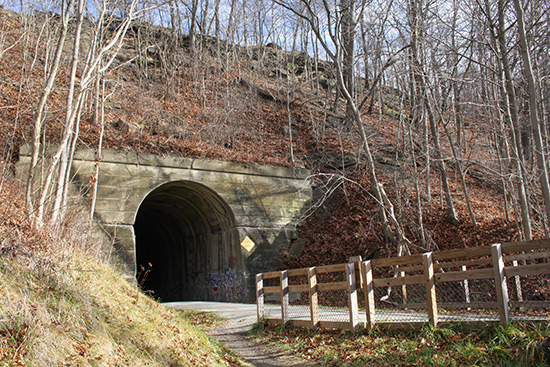
The impact of the improvements in these areas, which are currently on-road connections, will be huge. “Coming up to the Library Viaduct is where you’ll meet all of your challenges as a cyclist because you’re coming onto on-road riding,” says McKeown. “For the Library Viaduct in particular, the road—State Route 88—was busy and has a narrow shoulder. A lot of people would get to that point and just go back. It requires a confident cyclist to do it.”
David Poe, co-owner of The Tandem Connection, knows firsthand just how important those connections are. With his wife and another couple, he opened the bicycle rental and repair shop near mile marker 27 on the Montour Trail in 2013. The shop, housed in a century-old building (once a mining company store), had been unsuccessfully occupied by similar businesses before.
“No one could use the building because it was built on an island. The connections just weren’t there yet; you had to cross busy roads,” says Poe of the former gaps in the trail on either side of the building. “My wife and I are big runners. When we’d run to this spot, we’d go the other direction, too. It was not really viable for anything.”
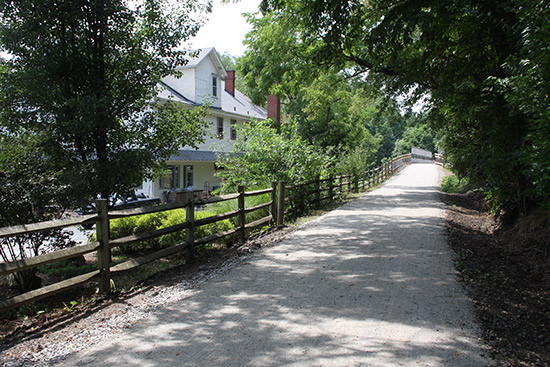
All that changed a few years ago, when a pair of trail bridges were constructed that created a continuous off-road trail in that area. For Poe, an entrepreneur, “a light bulb went off.” By any measure, The Tandem Connection has been a success and, just steps from the pathway, a friendly and welcome stop for trail users. The establishment includes a barbeque café (its pulled pork sandwiches have a rabid following), ice cream parlor, coffee bar and small gift shop. In the winter, the shop is cozy with two fireplaces ablaze and fat tire bikes and cross-country skis available to tackle the snow.
Centrally located on the trail, it’s also a prime spot for the more adventurous to begin their journeys. Head west from there, and the Montour Trail meets the Panhandle Trail, another beautiful trek, especially with springtime wildflowers, which stretches 29 miles and extends into West Virginia. Riders going east from the shop can connect to the famed Great Allegheny Passage (GAP), spanning 150 miles from Pittsburgh, Pennsylvania, to Cumberland, Maryland.
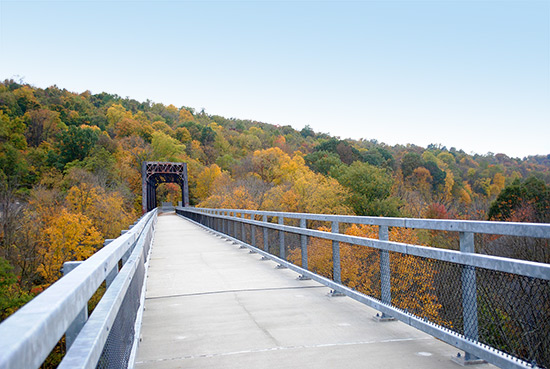
With this abundant connectivity, the Montour Trail was a natural fit for RTC’s Pennsylvania Rail-Trail Sojourn.
Going strong for 25 years, the Montour Trail has proved its merits from its littlest rider on a set of training wheels to top government officials. “There’s a lot of political support for the trail, and [the support] is bipartisan,” says Dave Wright, an engineer and project manager for Allegheny County. “They may argue about a lot of stuff, but the trail is something everyone can agree on.”

Donate
Everyone deserves access to safe ways to walk, bike, and be active outdoors.
